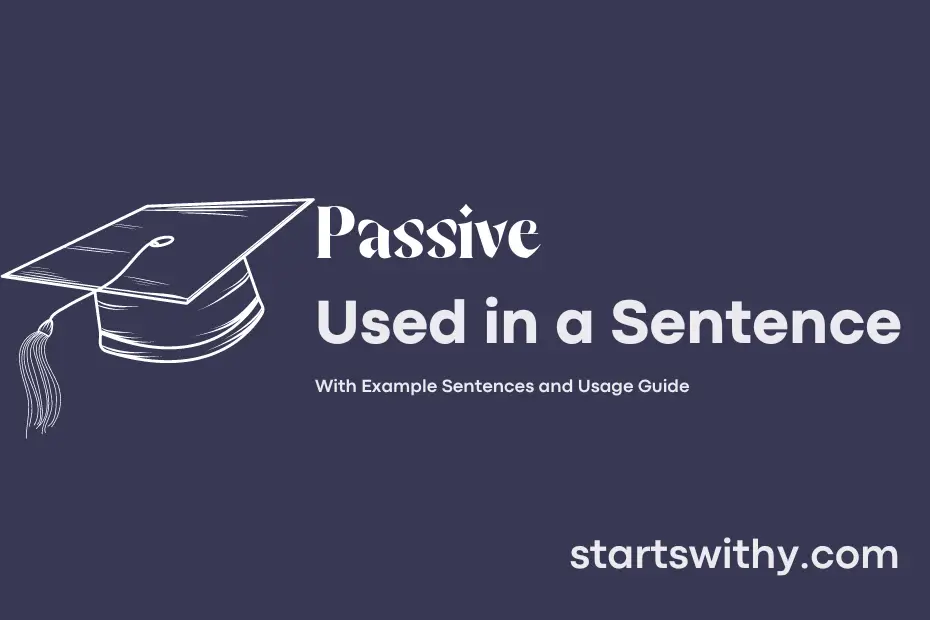Do you ever wonder how to construct sentences without the subject performing the action? Welcome to the world of passive voice. Passive voice is a grammatical construction where the subject of a sentence is the one receiving the action rather than performing it.
In passive voice, the focus is shifted from the doer of the action to what is being acted upon. By using passive voice, the emphasis can be placed on the object or the result of the action rather than the individual carrying it out.
7 Examples Of Passive Used In a Sentence For Kids
- The cake was baked by Mom.
- The toys were played with by the children.
- The story was read by the teacher.
- The cookies were eaten by the students.
- The song was sung by the class.
- The pictures were drawn by the students.
- The game was won by the blue team.
14 Sentences with Passive Examples
- Passive voice is often used in academic writing for a formal tone.
- Group projects are usually divided into tasks so that work can be carried out efficiently (passive).
- The assignment guidelines were carefully followed by all students (passive).
- The importance of time management in college is often underestimated by many (passive).
- Internship opportunities are frequently advertised on the university notice board (passive).
- The final exams will be conducted online this year (passive).
- The research paper was submitted before the deadline (passive).
- The lectures on quantum physics were attended by a large number of students (passive).
- The study material is usually provided by the professors in advance (passive).
- The internship interviews will be held on campus next week (passive).
- The hostel facilities are maintained by the college administration (passive).
- The campus library is always well-stocked with the latest books (passive).
- The college canteen is closed on Sundays (passive).
- Job opportunities for graduates are often shared through the college alumni network (passive).
How To Use Passive in Sentences?
To use Passive in a sentence, you need to structure the sentence in a way that emphasizes the receiver of the action rather than the doer. This is particularly useful when the doer is unknown, unimportant, or when the focus should be on the action itself.
To form a Passive sentence, start with the receiver of the action (subject) followed by a form of the verb “to be” (am, is, are, was, were, being, been) and the past participle of the main verb. For example: “The cake was baked by Sarah.”
It’s important to note that the doer of the action can be included using the preposition “by” but it is optional. For instance, in the sentence “The book was read,” the doer is not mentioned.
Passive sentences are commonly used when the focus is on the action or when the speaker/writer wants to be more formal or polite. In contrast, active voice sentences, where the doer of the action is the subject, are more direct and straightforward.
Practice using Passive by converting active sentences into passive ones. For instance, change “She watered the plants” to “The plants were watered by her.” With practice, you will become more comfortable using Passive in your writing.
Conclusion
In conclusion, the use of sentences with passive voice can have various impacts on writing. While it may be appropriate in certain situations, such as when the focus is on the receiver of the action rather than the doer, overusing passive voice can lead to complex and confusing sentences. It is important to strike a balance and consider the clarity and readability of the writing when deciding to use passive constructions.
By being mindful of when and how to use passive voice, writers can effectively convey their messages while maintaining coherence and engagement for their readers. Overall, understanding the nuances of passive voice in writing can enhance the clarity and effectiveness of communication, allowing for a more polished and professional presentation of ideas.



